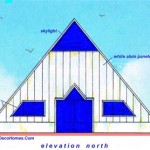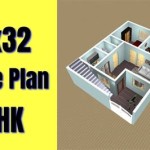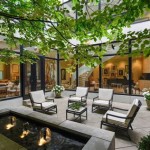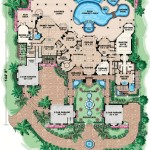Customizing house plans entails modifying pre-designed floor plans to align with individual preferences, needs, and specific site conditions. This process empowers homeowners to create unique and tailored living spaces that reflect their lifestyle and aspirations. An example of customization is adjusting the size of a room, reconfiguring the kitchen layout, or incorporating sustainable features to enhance energy efficiency.
The customization of house plans offers numerous advantages. It allows homeowners to optimize space utilization, create functional and comfortable living environments, and add personal touches that enhance their quality of life. By tailoring the plan to the specific characteristics of the building site, factors such as natural light, topography, and surrounding views can be maximized.
In the following sections, we will delve deeper into the benefits and considerations involved in customizing house plans. We will explore various approaches to customization, including working with architects, utilizing online resources, and leveraging the expertise of contractors and interior designers. By providing practical guidance and expert insights, this article aims to empower homeowners to make informed decisions throughout the customization process.
Customizing house plans offers numerous benefits for homeowners, including the ability to:
- Optimize space utilization
- Create functional living environments
- Add personal style and comfort
- Maximize natural light and views
- Enhance energy efficiency
- Accommodate specific site conditions
- Design for accessibility and aging in place
- Increase home value and marketability
By tailoring house plans to individual needs and preferences, homeowners can create unique and truly personalized living spaces that meet their specific requirements and enhance their quality of life.
Optimize space utilization
Optimizing space utilization is a crucial aspect of customizing house plans to create functional and comfortable living environments. Effective space planning involves maximizing the use of available square footage while ensuring a seamless flow of movement throughout the home.
One approach to optimizing space utilization is to carefully consider the placement of walls and partitions. By utilizing open floor plans or strategically removing unnecessary walls, homeowners can create larger, more expansive spaces that feel airy and inviting. Additionally, incorporating built-in storage solutions, such as cabinets, shelves, and drawers, can maximize vertical space and keep clutter to a minimum.
Another key factor in optimizing space utilization is to design multi-purpose rooms that can serve multiple functions. For example, a guest bedroom can be transformed into a home office during the day, or a living room can be designed to accommodate occasional overnight guests. By creating flexible spaces that can adapt to changing needs, homeowners can maximize the functionality of their homes.
Furthermore, utilizing natural light and incorporating outdoor spaces can create the illusion of more space. Large windows and skylights allow for ample natural light to enter the home, making rooms feel larger and brighter. Additionally, extending living areas outdoors through patios, decks, or balconies can provide additional usable space and create a seamless connection between the interior and exterior of the home.
Create functional living environments
Creating functional living environments is a fundamental aspect of customizing house plans. A functional home is one that meets the needs and preferences of its occupants, providing comfortable and efficient spaces for everyday activities.
- Well-defined spaces:
Clearly defining different areas within the home, such as the living room, kitchen, and bedrooms, ensures that each space has a specific purpose and function. This organization promotes order and efficiency, making it easier for occupants to navigate and utilize the home.
- Efficient flow:
The layout of the home should allow for a smooth and logical flow of movement between different spaces. This can be achieved by minimizing unnecessary hallways and maximizing open floor plans. A well-designed flow pattern reduces wasted space and creates a more cohesive living environment.
- Adequate storage:
Sufficient storage solutions, such as closets, cabinets, and built-in shelves, are essential for maintaining a clutter-free and organized home. By providing dedicated spaces for belongings, occupants can keep their living areas tidy and functional.
- Natural light and ventilation:
Incorporating ample natural light and ventilation into the home’s design creates a healthier and more comfortable living environment. Large windows, skylights, and cross-ventilation promote air circulation and reduce the need for artificial lighting and heating/cooling systems.
By carefully considering these factors when customizing house plans, homeowners can create functional living environments that enhance their daily lives and provide a sense of comfort and well-being.
Add personal style and comfort
Adding personal style and comfort to a customized house plan is about creating a living space that reflects the unique personality and preferences of its occupants. This involves incorporating design elements, finishes, and furnishings that evoke a sense of familiarity, warmth, and belonging.
One way to add personal style is through the selection of interior finishes and materials. This includes choosing flooring, wall colors, and lighting fixtures that align with the desired aesthetic. For example, warm wood tones and soft, neutral colors can create a cozy and inviting atmosphere, while bold patterns and bright colors can add a touch of vibrancy and personality.
Furniture and decor also play a significant role in shaping the overall style and comfort of a home. Selecting pieces that are not only functional but also aesthetically pleasing can create a space that is both comfortable and visually appealing. Mixing different styles and textures can add depth and interest, while incorporating personal touches, such as artwork, family photos, and cherished objects, can make the home feel truly lived-in and unique.
Another aspect of adding personal style and comfort is considering the specific needs and preferences of the occupants. For example, those who enjoy cooking may want to design a kitchen with ample counter space, a large pantry, and high-end appliances. Similarly, those who love to entertain may opt for a home with an open floor plan and a dedicated space for hosting guests.
By carefully considering personal style and comfort when customizing house plans, homeowners can create living spaces that are not only beautiful but also deeply personal and reflective of their individual aspirations and lifestyles.
Maximize natural light and views
Maximizing natural light and views when customizing house plans offers numerous benefits, including improved mood, increased energy efficiency, and enhanced overall well-being. By strategically positioning windows and doors, and incorporating other design elements, homeowners can create living spaces that are both visually appealing and deeply connected to the outdoors.
- Large windows and skylights:
Large windows and skylights allow for ample natural light to penetrate the home, creating a brighter and more inviting atmosphere. They also provide expansive views of the surrounding landscape, bringing the outdoors in and menciptakan a stronger connection to nature.
- Proper window placement:
Careful consideration should be given to the placement of windows to maximize natural light throughout the day. South-facing windows allow for the most sunlight, while east- and west-facing windows provide morning and afternoon light, respectively. By strategically positioning windows in different areas of the home, homeowners can ensure that each space receives adequate natural light.
- Reduced reliance on artificial lighting:
With increased natural light, the need for artificial lighting is reduced, leading to energy savings and a more sustainable home. Natural light can also improve mood and reduce eye strain, creating a healthier and more comfortable living environment.
- Enhanced views:
Windows and doors can be strategically placed to frame specific views, such as a scenic landscape, a water body, or a lush garden. By capturing these views, homeowners can create a sense of tranquility and bring the beauty of nature into their homes.
Incorporating these strategies into customized house plans allows homeowners to create living spaces that are not only beautiful but also deeply connected to the outdoors. By maximizing natural light and views, homeowners can enhance their quality of life and create a truly inviting and inspiring home.
Enhance energy efficiency
Customizing house plans to enhance energy efficiency offers long-term benefits for homeowners, including reduced utility costs, a smaller carbon footprint, and a more sustainable living environment.
- Improved insulation:
Proper insulation in walls, ceilings, and floors is crucial for minimizing heat loss and gain. Customized house plans can incorporate higher insulation levels than standard building codes require, resulting in a more energy-efficient home. This can be achieved by using thicker insulation materials, such as fiberglass batts or spray foam insulation, and by ensuring that all gaps and cracks are sealed.
- High-performance windows and doors:
Windows and doors are major sources of heat loss, especially in cold climates. Customizing house plans to include high-performance windows and doors can significantly improve energy efficiency. These windows and doors feature multiple panes of glass, low-emissivity coatings, and tight seals to minimize heat transfer.
- Energy-efficient appliances and systems:
Modern appliances and HVAC systems are designed to consume less energy. When customizing house plans, homeowners can specify the installation of energy-efficient appliances, such as ENERGY STAR-rated refrigerators, dishwashers, and washing machines. Additionally, energy-efficient HVAC systems, such as heat pumps and geothermal systems, can reduce heating and cooling costs.
- Renewable energy sources:
Incorporating renewable energy sources into customized house plans can further enhance energy efficiency and reduce reliance on fossil fuels. This can include installing solar panels to generate electricity, solar water heaters to provide hot water, and geothermal systems to harness the earth’s natural heat for heating and cooling.
By considering these energy-efficient strategies during the house plan customization process, homeowners can create sustainable and eco-friendly living environments that minimize their energy consumption and environmental impact.
Accommodate specific site conditions
Customizing house plans to accommodate specific site conditions ensures that the home is designed to complement and harmonize with its surroundings. Factors such as topography, soil conditions, vegetation, and solar orientation must be carefully considered to optimize the home’s functionality, energy efficiency, and overall aesthetic appeal.
One important aspect is to design the home in a way that minimizes disruption to the natural landscape. This can involve working with the existing topography, preserving mature trees, and utilizing native plants in landscaping. By respecting the site’s unique characteristics, homeowners can create a home that blends seamlessly into its surroundings and minimizes environmental impact.
Soil conditions also play a crucial role in house plan customization. The type of soil, its bearing capacity, and drainage characteristics must be carefully assessed to determine the most appropriate foundation design. For example, homes built on expansive soils may require special foundations to prevent structural damage caused by soil movement. Additionally, proper drainage systems must be incorporated to prevent water accumulation around the home.
Vegetation on the site can provide both benefits and challenges. Mature trees can offer shade, privacy, and aesthetic appeal, but they can also interfere with solar access and create root systems that can damage foundations. When customizing house plans, homeowners must carefully consider the placement of trees and other vegetation to maximize their benefits while minimizing potential drawbacks.
By taking into account specific site conditions during the house plan customization process, homeowners can create homes that are not only visually appealing but also functional, sustainable, and respectful of the surrounding environment.
Design for accessibility and aging in place
Customizing house plans to incorporate accessibility and aging-in-place features ensures that the home remains comfortable, safe, and functional for occupants as they age. By considering these features during the design process, homeowners can create living environments that promote independence, dignity, and quality of life for all generations.
- Universal design principles:
Universal design principles aim to create spaces that are accessible and usable by people of all ages and abilities. Features like wider doorways, lever handles, and curbless showers can make the home more accessible for individuals with physical limitations. Additionally, incorporating smart home technology, such as voice-activated controls and automated lighting, can enhance convenience and safety for all occupants.
- Single-story living:
A single-story home design eliminates the need for stairs, making it easier and safer for individuals with mobility issues to navigate. This design also allows for better flow and accessibility throughout the home.
- Accessible bathrooms:
Bathrooms are often areas where accessibility is crucial. Customizing house plans to include features such as roll-in showers, grab bars, and raised toilets can make bathing and toileting safer and more comfortable for individuals with limited mobility or balance issues.
- Future-proofing:
In addition to immediate accessibility needs, it is also important to consider future-proofing the home. This involves incorporating features that may not be immediately necessary but can be easily adapted as needs change. For example, reinforcing walls to support future grab bar installations or pre-wiring the home for assistive technology can ensure a smooth transition to aging in place.
By designing for accessibility and aging in place, homeowners can create homes that are not only comfortable and functional but also supportive of their changing needs throughout their lives.
Increase home value and marketability
Customizing house plans to increase home value and marketability involves incorporating features and amenities that appeal to a wider range of buyers and enhance the overall desirability of the property. By considering current market trends and tailoring the home to meet the needs and preferences of potential buyers, homeowners can maximize their return on investment and sell their homes more quickly and for a higher price.
- Unique and personalized features:
In today’s competitive real estate market, homes that stand out from the crowd are more likely to attract buyers and command a higher price. Customizing house plans to include unique and personalized features, such as a gourmet kitchen, a luxurious master suite, or a dedicated home office, can set the home apart from similar properties and make it more desirable.
- Open floor plans and indoor-outdoor living:
Open floor plans and seamless transitions between indoor and outdoor living spaces are highly sought-after features in modern homes. Customizing house plans to incorporate these elements can create a sense of spaciousness, natural light, and connection to the outdoors, which are highly valued by potential buyers.
- Energy efficiency and sustainability:
With increasing environmental consciousness among homebuyers, energy-efficient and sustainable features are becoming increasingly important. Customizing house plans to include features such as solar panels, energy-efficient appliances, and sustainable building materials can not only reduce utility costs for the homeowner but also increase the home’s value and appeal to eco-conscious buyers.
- Smart home technology:
Smart home technology is rapidly becoming a standard feature in modern homes. Customizing house plans to incorporate smart features, such as automated lighting, voice-activated controls, and remote access to security systems, can enhance convenience, energy efficiency, and home security, all of which are highly attractive to potential buyers.
By carefully considering these factors and tailoring house plans to meet the demands of the real estate market, homeowners can create homes that are not only beautiful and functional but also highly desirable and valuable in the eyes of potential buyers.










Related Posts








